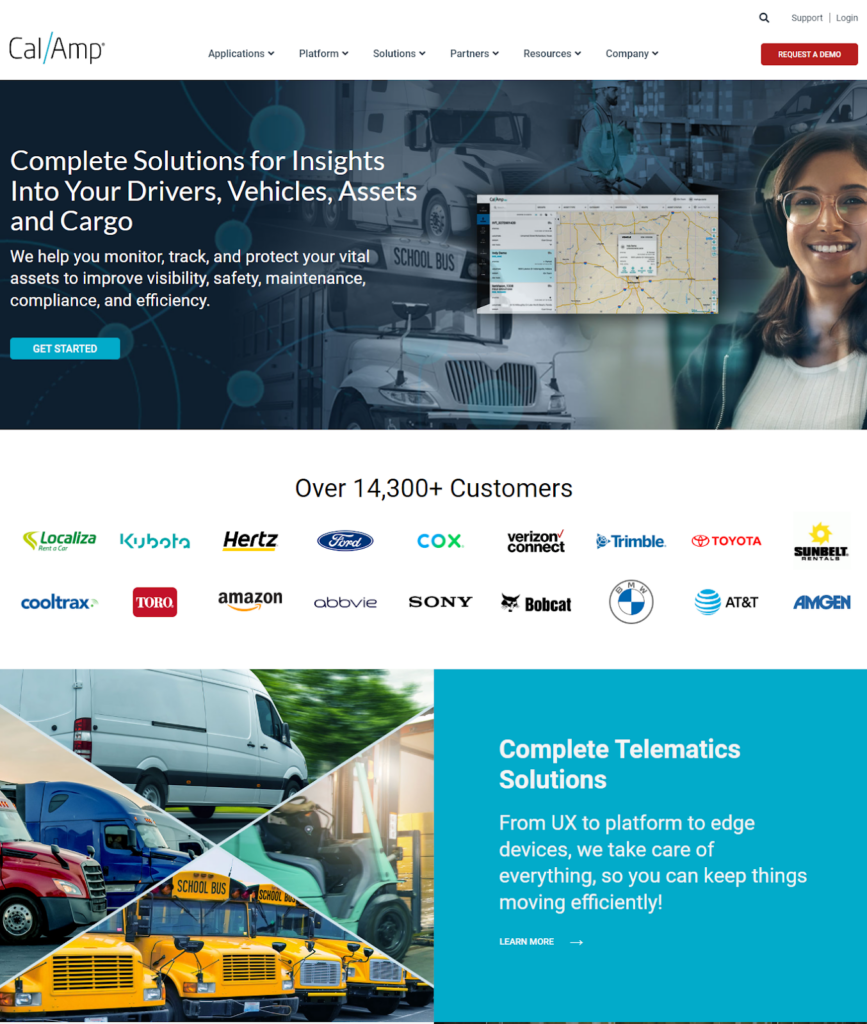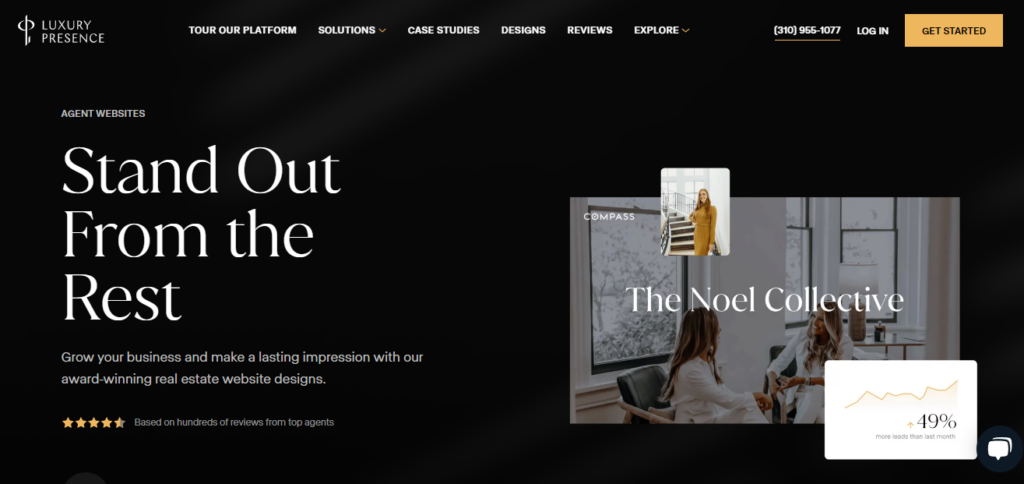How to Create a Visual Identity for your Business Through Marketing Strategy

When you sit down and think about creating a visual identity for your business, you may not think about starting with your marketing strategy first.
In fact, some brands go straight to creating their visuals before taking the time to understand who they’re serving and how they plan to market to them. This is a huge disadvantage as the visuals completely dismiss the company’s overarching mission and aren’t tailored to the audience it serves.
In other words, if you want to reach your target audience and remain impressionable, you need to create a visual identity in line with your mission and their needs.
If you’re interested in giving this a go but don’t know where to start, we’re here to help.
In today’s article, we’re breaking down how to create a visual identity for your business through your marketing strategy.
Ready for the details?
Let’s begin.
Outline your brand mission
Your mission is the most important part of your visual identity. So, in this step, start by outlining your company’s overarching vision.
Think about it. What do you hope to achieve in the next year? Two years? Five years? 10 years?
For instance, maybe you run a graphic design freelance collective, but you’re aiming to scale it into a full-out design and marketing agency in the next two years.
Or, maybe you run a US eCommerce store and you’re interested in branching out to international markets in the next year. Whatever the case may be, be as specific as possible.
Next, consider your audience. Who do you help and why? Why should they care about you? And how do you help them exactly? For instance, maybe you help mompreneurs create their logo, visual elements, website design, and blog design. If you feel like you need some inspiration when creating your visual identity, startup books can be a goldmine of guidance and advice to get your ideas flowing.
Next, write out your long-term goals, short-term goals, and company milestone goals. For instance, if you run a SaaS company, your goals and milestones may include:
- Long-term goal: Acquire multiple SaaS startups and reach unicorn status
- Short-term goals: Grow customer base by 20% to 25% every quarter
- Milestone goals: Acquire two funding rounds, one in the Spring of 2023 and the second in the Spring of 2024
When you’re finished, use all this information to create your official brand mission.
Here’s an example:
“We’re a project management SaaS company that’s passionate about helping project managers shave unnecessary tasks off their workload each week. With our complete all-in-one platform, project managers can plan, track, and execute projects 30% faster than with any other project management tool. Our top mission? Helping project managers become project warriors.”
When you finish your mission statement, add it to the “About” tab or the “Company Mission” tab on your website.
Next, refer to your brand mission to create a simplified value statement.
In your value statement, be sure to list who you help and include a CTA.
Here’s an example:
“We help project managers execute projects 30% faster than with any other project management tool. Sign up for a free trial today.”
Finally, add your value statement to your social media bios and as CTAs on your landing pages, website, and blog.
Get a firm grip on your target audience
The people you serve will act as your top inspiration when you create your visual identity. So, in this step, get laser-clear on who you serve. Our favorite way to do just that? Create buyer personas. When you create your buyer personas, get super specific on the details. For instance, if you cater to B2C or DTC audience, be sure to include a faux:
- Name
- Age
- Occupation
- Purchase habit list
- Needs list
- Pain point list
- Desire list
If you serve a B2B audience, be sure to include a faux:
- Company name
- Company start date
- Company size
- Company target audience
- Purchase habit list
- Needs list
- Pain point list
- Desire list
Next, strategy ways to create a visual identity in line with your buyer personas.
For instance, CalAmp, a telematics software company, is a perfect example of a company that’s created a solid visual identity through its marketing strategy. With its clear target audience in mind, CalAmp has structured its visual identity to convey its professionalism and flexibility in the telematics industry.

In this example, we especially love the professional images CalAmp uses to speak directly to highlight the audience it serves.
To follow suit, consider creating website icons, banners, and professional images that speak to your ideal customer, too.
For instance, if you sell baking supplies, you might take professional images of bakers using your supplies in their professional kitchens. Or you might create bakery-themed icons, such as cupcake icons, cookie icons, and pie icons to use in place of bullets when you create your product list.
And speaking of icons, some businesses use symbols and icons to convey who they help and how in an easy-to-understand way. For instance, VPSBG has a service that allows customers to pay for a VPS with BTC. To make this process easier to understand, VPSBG breaks down its features using simple paragraphs with assigned symbols.
Here’s what that looks like:

If you’re interested in adding symbols to your website, we recommend hiring a designer to create custom icons for you. You can also test out some free vector graphics to discover what kinds of icons look best before officially hiring a designer.
Identify the problems you solve and the mood and feelings you want to evoke
In the next step, it’s time to uncover what root problems you solve and what kind of mood and feelings you’d like to evoke.
For instance, if you’re a real estate agent for first-time home buyers, you likely solve problems such as:
- Walking customers through required documents and all legal processes
- Holding customers’ hands throughout inspections, appraisals, and last-minute home repairs and renovations
- Helping customers locate homes according to their specified criteria
- Helping customers understand how their loan and mortgage payments will work
After you’ve outlined the problems you solve, consider the feelings you’d like to evoke in your audience. If we refer to the same example, you’d likely want to evoke a sense of calm and ease in your first-time buyers.
In this case, maybe you’d choose color palettes, fonts, and visuals representing peace, relaxation, and a sense of home.
For instance, you might use calm colors, such as sage, cream, linen, and tan. You might also go with an easeful font, such as Calm Gray or Calmine Font Duo.

And as far as images go, you’d probably use professional photos of staged, cozy homes — maybe even with candid, happy families in some of them.
With that said, let’s take a look at some real brand examples:
Our first example is Luxury Presence, a luxury real estate website design platform that focuses on evoking a sense of… you guessed it: luxury and class.
As such, Luxury Presence uses high-end and classic colors, fonts, and images to establish its mood. Take a look at its black-and-white palette and classic font style to see what we mean:

Another example is the all-in-one trading journal, TradeZella.
TradeZella took mood and feelings to a whole new level when it created a character and tool named Zella to help its customers analyze and optimize trading activity. The tool design looks like it's straight off of Wall Street, helping to further establish a trading theme.

Choose theme sets in line with your marketing strategy
Make your life easier by investing in theme sets in line with your marketing strategy.
For instance, grab some poster templates from Picsart, use email marketing templates from ActiveCampaign, and sort through social media marketing templates from Social Curator.
Having collections of theme sets like this ready-to-go can shave hours off of your marketing team’s efforts and remove unnecessary design burdens.
If you prefer to go custom, consider hiring a designer to create custom theme sets for your brand.
Whichever method you choose, be sure to finalize your colors, logo, visual elements, and any other visual identity details before settling on your themes.
Why? To build a visual reputation, it’s important that all of your theme sets stay congruent, so don’t skip this step. Psst: We have a checklist for you in the next step that walks you through each visual detail you need to create!
For instance, let’s say you’ve chosen the following:
- Colors: Black, purple, silver, sparkling white
- Logo: A silver moon with a black and purple outline
- Icons: A star icon, moon phase icons, and a planet icon
- Graphics: Moon, stars, galaxies, rockets
- Font: Asheboroby by Parker Creative

In this case, you’ll need to make sure that your theme sets include the same colors and visual elements listed above before implementing them.
For instance, maybe you could include black and purple colors detailed with star and moon icons in your email marketing templates. And maybe you can bedazzle your poster templates with rocket graphics and shooting stars.
Whatever the case may be, make sure all of your theme sets look consistent across the board.
Add your visuals
Now that you have a firm grasp on your brand mission, target audience, the problems you solve, and the feelings you want to evoke, it’s time to finalize and add your visuals.
Here’s a checklist you can use to organize the process:
- Finalize your color palettes, fonts, and visual icons
- Create a custom logo and add it to your company branding materials, website, blog, and email signature line
- Add your brand mission statement to your About tab or Company Mission tab on your website
- Add your value statement in your social media bios and ensure your profile photos evoke the mood you’re aiming for
- Revamp your landing pages to include your dedicated color palettes, images, and icons
- Finalize your email newsletter design or choose from themed templates
- Revamp your website with your color palettes, fonts, visual icons, and professional images
- Create a professional welcome video in line with the mood and feelings you’d like to evoke and add it to the homepage of your website
- Design your physical products, product labels, and print materials using your dedicated palettes, fonts, and visual icons
- Hire a photographer to shoot professional images related to the mood you’d like to convey — stick to the same color palettes when shooting your photos
- Revamp the look and feel of your blog so it’s congruent with your website, landing pages, and social media profiles
- Hire a copywriter to refresh the copywriting on your website, landing pages, and related marketing channels
- Batch your social media content 90 days out and make sure it’s in line with your theme sets, colors, and the mood you’d like to convey
Wrap up
Ready to create a visual identity in line with your marketing strategy and audience’s unique needs?
We hope the steps we shared today are helping you breathe a sigh of relief as you move one step closer to building a visual identity that sells.
For good measure, here’s a quick recap of the steps we shared today:
- Outline your brand mission
- Get a firm grip on your target audience
- Identify the problems you solve and the mood and feelings you want to evoke
- Choose theme sets in line with your marketing strategy
- Add your visuals
And that’s it, friends. Now, go forth and create a visual identity you and your customers can be proud of. To your success!
Featured image by Mitchell Luo on Unsplash
